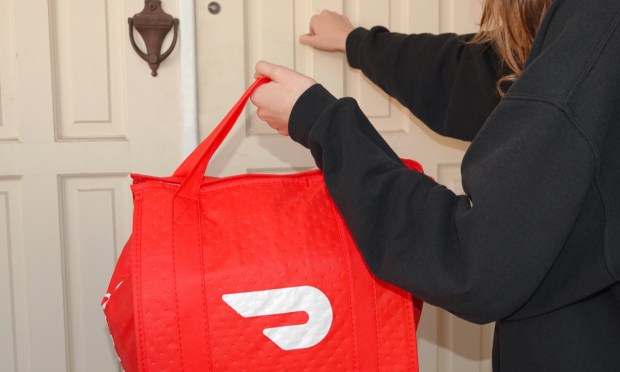
As DoorDash looks to grow from a restaurant delivery platform to something more like a super app, the aggregator is expanding its retail offerings by orders of magnitude each year.
On a call with analyst Thursday (Feb. 15) discussing the San Francisco-based delivery company’s fourth quarter and full-year 2023 financial results, CEO Tony Xu spoke to the rapid pace of the aggregator’s growth in the category.
“When you look at selection, that’s something that we’re working towards,” Xu said. “I mean, it’s happening actually pretty rapidly and consistently, where three years ago, when we’d just launched our service, we were working with maybe a couple of dozens of retailers. Now, that’s in the hundreds, with hundreds of thousands of stores. So, that remains a bear.”
Indeed, the company is positioning its platform not just as a restaurant marketplace but as a service that can be of value to small merchants across categories. In a letter to shareholders Thursday, Xu and CFO Ravi Inukonda contended that small businesses face “disadvantages in scale, data, and efficiency” compared to major retailers and that DoorDash can in turn help them operate with “increased simplicity, greater scale, and greater efficiency.”
Notably, DoorDash’s performance has been slipping in recent months, according to PYMNTS’ Provider Ranking of Aggregators, which ranks leading platforms with a proprietary algorithm that accounts for factors including usage, downloads and channel coverage. At the time of the company’s last earnings report in November, it held the top ranking by a comfortable margin, with 96 points. Now, however, it has fallen all the way down to No. 9, behind 10 other apps, with just 64 points, slipping behind rivals Instacart and Uber Eats, among others.
Still, DoorDash is the most-used aggregator in the country. PYMNTS Intelligence surveys for the Connected Dining series revealed that, as of June, 77% of aggregator users reported that they were DoorDash customers, while only 49% of aggregator users said the same of Uber Eats and 35% of Grubhub.
Overall, the company is seeing transactions trend positive, suggesting that consumers’ demand for last-minute delivery continues to rise. In the quarter, DoorDash saw a 23% year-over-year (YoY) increase in total orders, reaching 574 million, and a 22% YoY increase in marketplace gross order value, totaling $17.6 billion.
Noting this demand, the company also sees the opportunity to drive adoption of its DashPass and Wolt+ subscription programs.
“There’s 100 possible use cases per month for every consumer, in terms of the categories and their consumption, whether that’s eating or buying and retail, even for our best customers, and certainly for the average subscribers,” Xu said. “If we [can] serve every use case for local commerce, I think the subscriber base would be fairly healthy.”
In the competitive landscape of delivery aggregators, DoorDash’s strategic pivot towards becoming more of a super app indicates a bold vision for the future of on-demand delivery, and growing adoption suggests that these bets may be paying off.